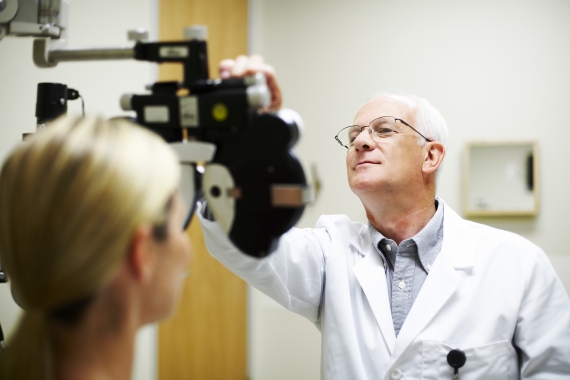Eye Problems with Diabetes
Diabetes can affect your health in a variety of ways and cause a number of different eye problems. In fact, diabetes is the number one cause of blindness in the U.S., and people with diabetes are 25 times more likely to lose vision than those who are not diabetic. Elmquist Eye Group can help you safeguard your eyesight.
 Elmquist Eye Group has served Lee County and Southwest Florida for more than 20 years. E. Trevor Elmquist, DO, his partner, Kate Wagner, OD, and his associate, Nina Burt, OD, provide a complete range of eye care services, including comprehensive eye exams and diagnosis and treatment of cataracts, macular degeneration, diabetic eye disease, dry eyes, glaucoma, presbyopia, myopia, hyperopia and other eye conditions.
Elmquist Eye Group has served Lee County and Southwest Florida for more than 20 years. E. Trevor Elmquist, DO, his partner, Kate Wagner, OD, and his associate, Nina Burt, OD, provide a complete range of eye care services, including comprehensive eye exams and diagnosis and treatment of cataracts, macular degeneration, diabetic eye disease, dry eyes, glaucoma, presbyopia, myopia, hyperopia and other eye conditions.
Dr. Elmquist is an experienced board certified ophthalmologist. He specializes in general ophthalmology and cataract surgery. He has been selected as one of America’s Top Doctors by Castle Connolly Medical Ltd. based on nominations from other physicians. Drs. Wagner and Burt are skilled board certified optometrists.
How Diabetes Affects Your Eyes
High blood sugar from diabetes can damage four parts of your eye:
- Retina. The retina is the light-sensitive tissue that lines the back wall of the eye. It converts light coming into your eye into visual messages and transmits them through the optic nerve to your brain. Prolonged periods of high blood sugar can damage the blood vessels of the retinal tissue, causing them to bleed or leak fluid. This is called non-proliferative diabetic retinopathy (NPDR).
- Vitreous gel. The vitreous gel (sometimes called vitreous humor) is a colorless gel that fills the space at the rear of your eye between the retina and the lens. In a more advanced form of diabetic retinopathy, called proliferative diabetic retinopathy (PDR), new fragile blood vessels can begin to grow in the retina and leak blood into the vitreous gel, causing vision loss. PDR can also cause detachment of the retina or glaucoma.
- Lens. The lens is located just behind the iris (the colored part of the eye) and the pupil. It is normally clear and helps to focus light on the retina. In patients with diabetes, poorly controlled high blood sugar can cause fluid to accumulate in the lens, changing its curvature and causing blurred vision. Also, as we age, proteins in the lens start to break down, causing it to gradually thicken and become cloudy. This is called a cataract, and it can also cause your vision to become blurred or dim. Diabetes can speed up the formation of cataracts. Constant fluctuations in blood sugars can accelerate the clouding of the lens and cause cataracts to occur at an earlier age.
- Optic nerve. The optic nerve is located at the back of your eye. It connects the eye to the brain, carrying visual messages from the retina. Extremely high pressure in the eye caused by proliferative diabetic retinopathy can result in glaucoma which causes progressive damage to the optic nerve. If left untreated, it can cause loss of vision and even blindness.
Importance of Eye Exams
The American Optometric Association recommends that everyone with diabetes have a comprehensive dilated eye examination once a year. Early detection and treatment of diabetic eye disease can help you avoid substantial vision loss.
At Elmquist Eye Group we perform a thorough retinal exam through dilated pupils to check for any eye problems related to diabetes, including diabetic retinopathy. Don’t wait until you can’t see well enough to complete everyday tasks. Call us today at (239) 936-2020 to schedule an eye exam and protect your good vision.
